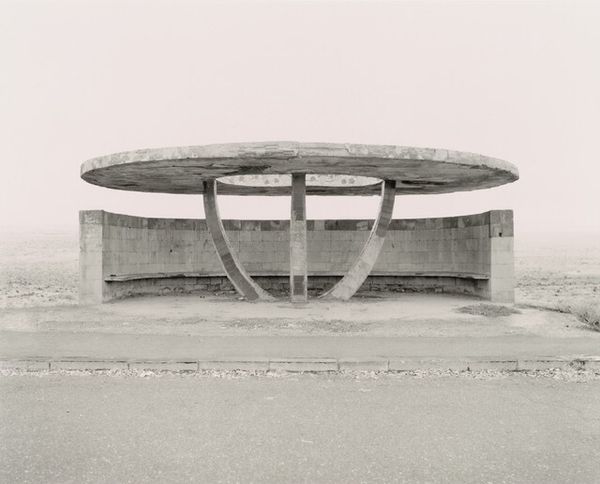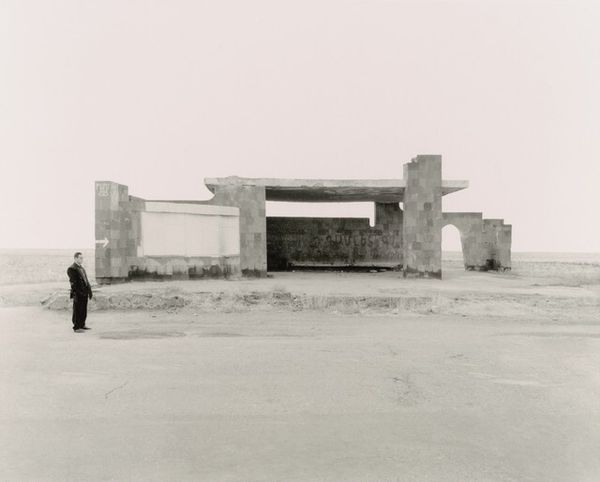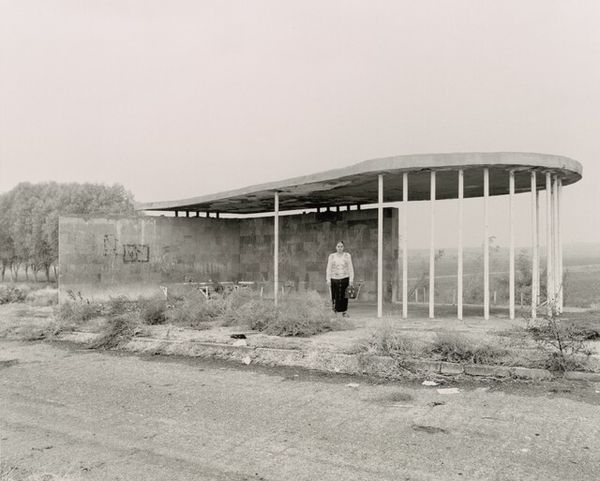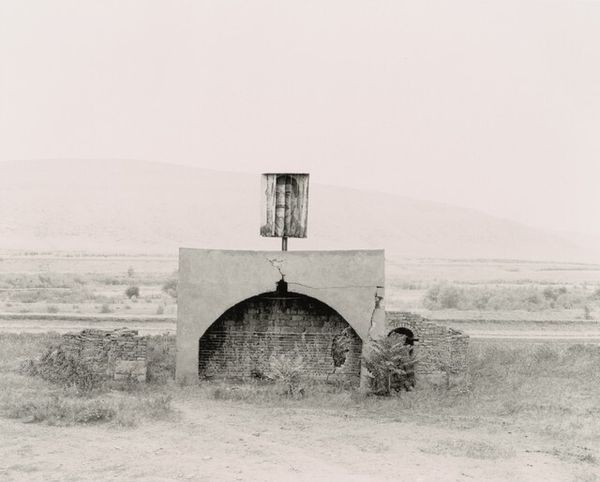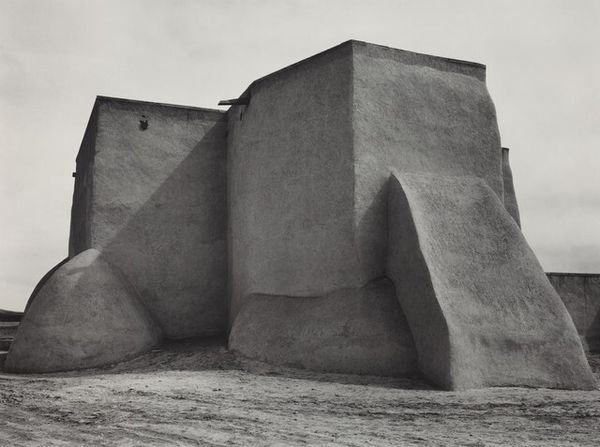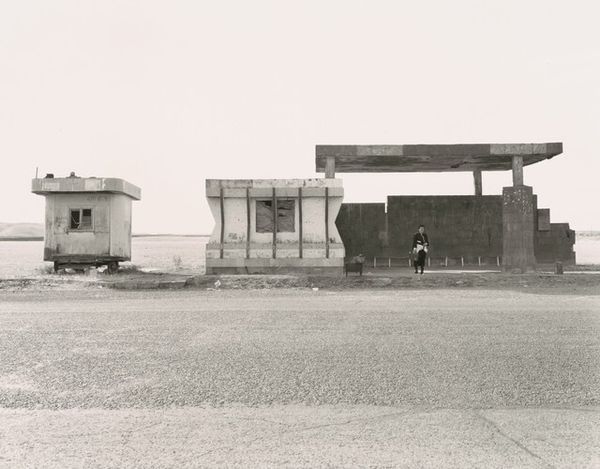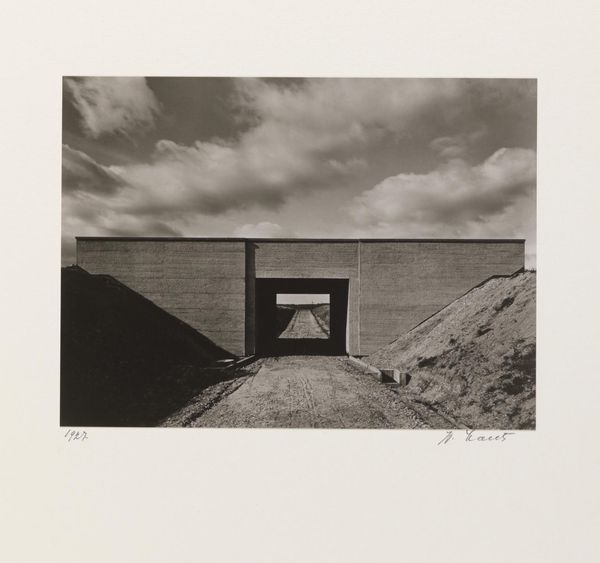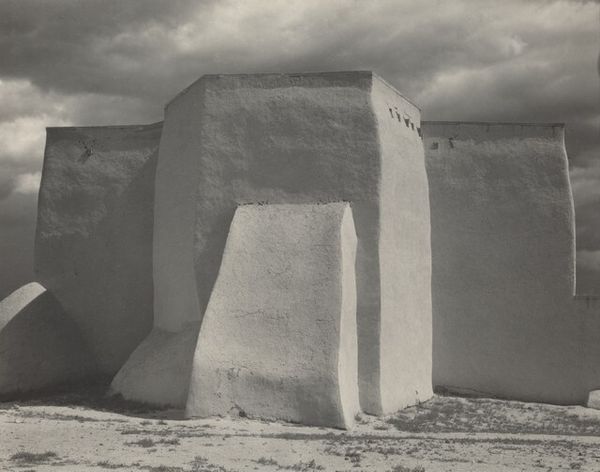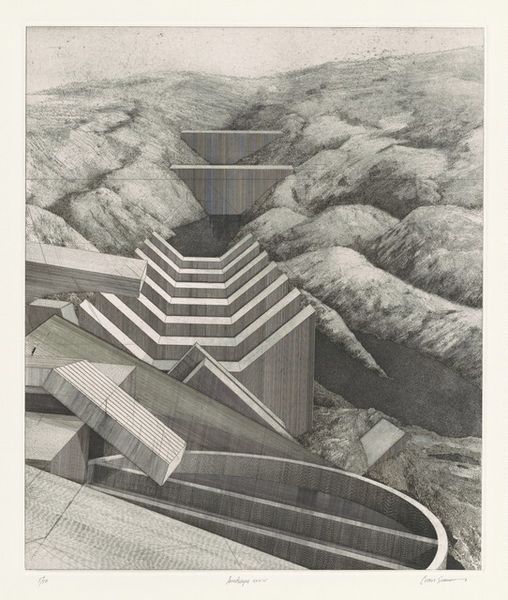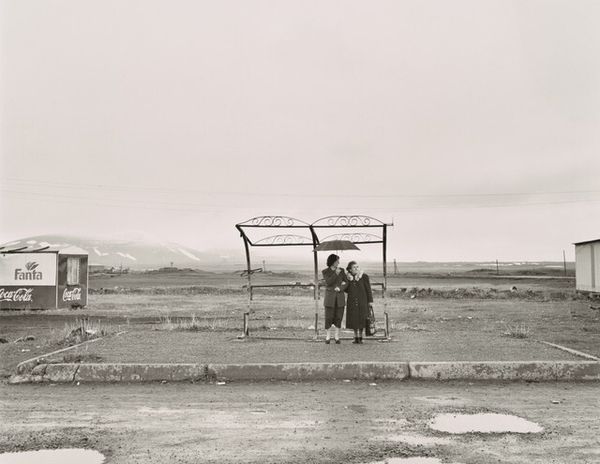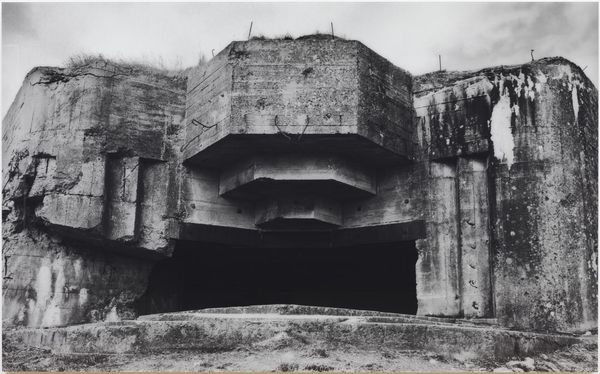
photography, site-specific
#
conceptual-art
#
landscape
#
photography
#
geometric
#
site-specific
#
modernism
Dimensions: image: 35.9 × 44.9 cm (14 1/8 × 17 11/16 in.) sheet: 43 × 50.6 cm (16 15/16 × 19 15/16 in.)
Copyright: National Gallery of Art: CC0 1.0
Curator: Looking at this gelatin silver print, what strikes you most about Ursula Schulz-Dornburg’s “Erevan - Gymri” from the year 2000? Editor: The sheer brutalism of it. It’s so austere. The concrete structure looks abandoned, a vestige of some forgotten purpose, isolated in this vast, desolate landscape. What's your take? Curator: It's precisely that juxtaposition of geometric severity against the natural curve of the landscape that intrigues me. The severe, almost classical, composition directs your gaze in very precise ways. The artist invites contemplation on forms that were once critical, perhaps, reduced to echoes. Editor: Echoes built with specific techniques and available materials. Think about the physical labor, the pouring and setting of concrete in such a remote locale. The material speaks of mass production and utilitarian intent, far removed from individual craftsmanship, yet crafted by someone nonetheless. It highlights the shift toward function and practicality over tradition. Curator: The photographic process also flattens space, emphasizing the planar quality of the architecture. Observe the almost complete absence of shadows, except within the opening itself; it brings into focus the geometry and pure form. Editor: I wonder about the erosion, the staining of the concrete; these aren't flaws but testimonials of environmental interaction. The work embodies physical consequences as the elements impact it. It highlights an integration into nature over time. It provokes questions: was the construction locally sourced or transported? How does this monument serve or hinder a population's journey through and inhabitation of that space? Curator: That's quite the analysis. However, I return to that subtle geometric grid she uses that gives rhythm to desolation and allows an entry to interpreting the forms. These shapes hint at modern utopias gone awry or possibilities. I think this work is more about its formal arrangements within the spatial framework. Editor: Agreed, that grid is crucial, but can't it speak to the material constraints that led to such repetition in the design, or even larger systems? It shows a commitment, that over time may reveal stories the structure cannot even remember. What stories might we imagine here? Curator: That gives me something new to think about the next time I encounter "Erevan - Gymri" in a similar location, maybe outside our typical white cube setting! Editor: Indeed, that structure now appears in a slightly new light for me too!
Comments
No comments
Be the first to comment and join the conversation on the ultimate creative platform.
